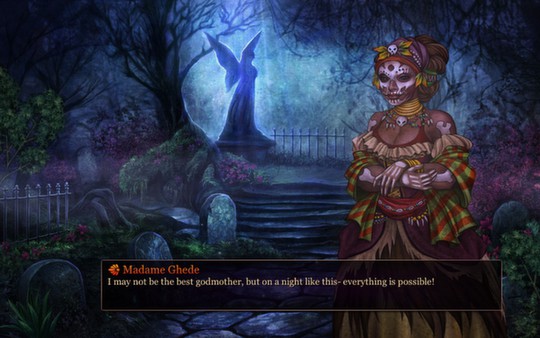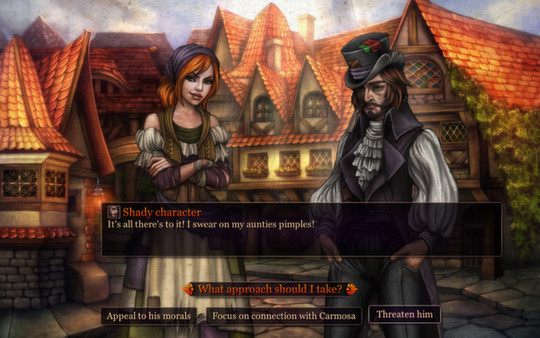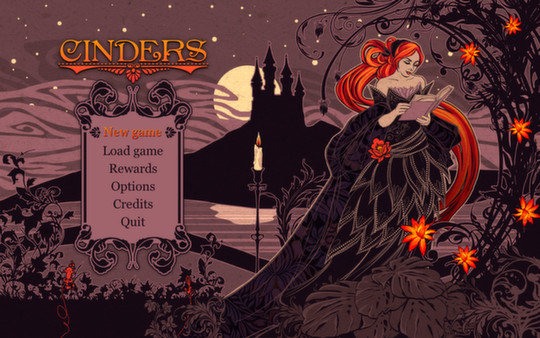While it evidently takes a lot of inspiration from the famous fairytale, Cinders tells a story with a lot more personality and intrigue than the original Cinderella.
It is clear from the very first page of the visual novel that this will not quite be the story you remember from childhood. The art style is distinctly dark. Along with Gothic castles, the settings you’ll come across include eerie graveyards and even the peaceful forest are often depicted with moonlight streaming between twisted tree branches.
It steers away from the fairy godmother side of the story in favour of a more ambiguous magical element. There are rumours of fairies in the forest, but the characters that looks after you when you feel most alone is a wise medicine woman.

It begins with a mysterious flash forward that plunges you into the conflict between Cinders, her family and a mysterious, scarred stranger. Despite this crucial plot point being revealed before you’ve made any decisions of your own, it doesn’t detract from how much of the story you get to control through your decisions.
Overall, Cinders is a very well-written game. The dialogue is believable, with each character having their own quirks and personality. Even Cinders, the narrative voice of the game which you get to control, is given different enough options in terms of what she says that you get to put a lot of your own attitudes into her character.
The more mature themes of the revamped story are complemented by a sense of humour that borders on being meta. It jokes about some fairytale tropes, as well as developing some elements of a simple story so that they make more sense in context. For instance, it goes into some detail about the political pressures weighing on the prince following his father’s death that force him into a position where he needs to marry quickly and meet all of eligible women at once, simultaneously.

As well as the additional action and adventure, Cinders also approaches the original story on a more emotional level. It gives you more relationships with local townsfolk, which makes the setting feel more complete. In your interactions with your step-mother and step-sisters, you are given the opportunity to try to bond with them, to heal the scars in your disjunct family and try to understand their motivations a little bit.
This gives some classically two-dimensional characters a lot more depth. It genuinely challenges you to think about the ramifications of every decision you make, even if those are something as simple as whether or not you might hurt your sister’s feelings.
There are definitely lessons woven into Cinders, but they’re done subtly. You come away from it feeling oddly motivated to think about the decisions ahead of you. It’s well made in terms of its structure and is a refreshing take on an old story.
Review: Cinders (Nintendo Switch)
Original
Cinders breathes new life into a tired fairytale in a way that is smart, dark and funny.



April 1, 2019
[…] Cinders […]